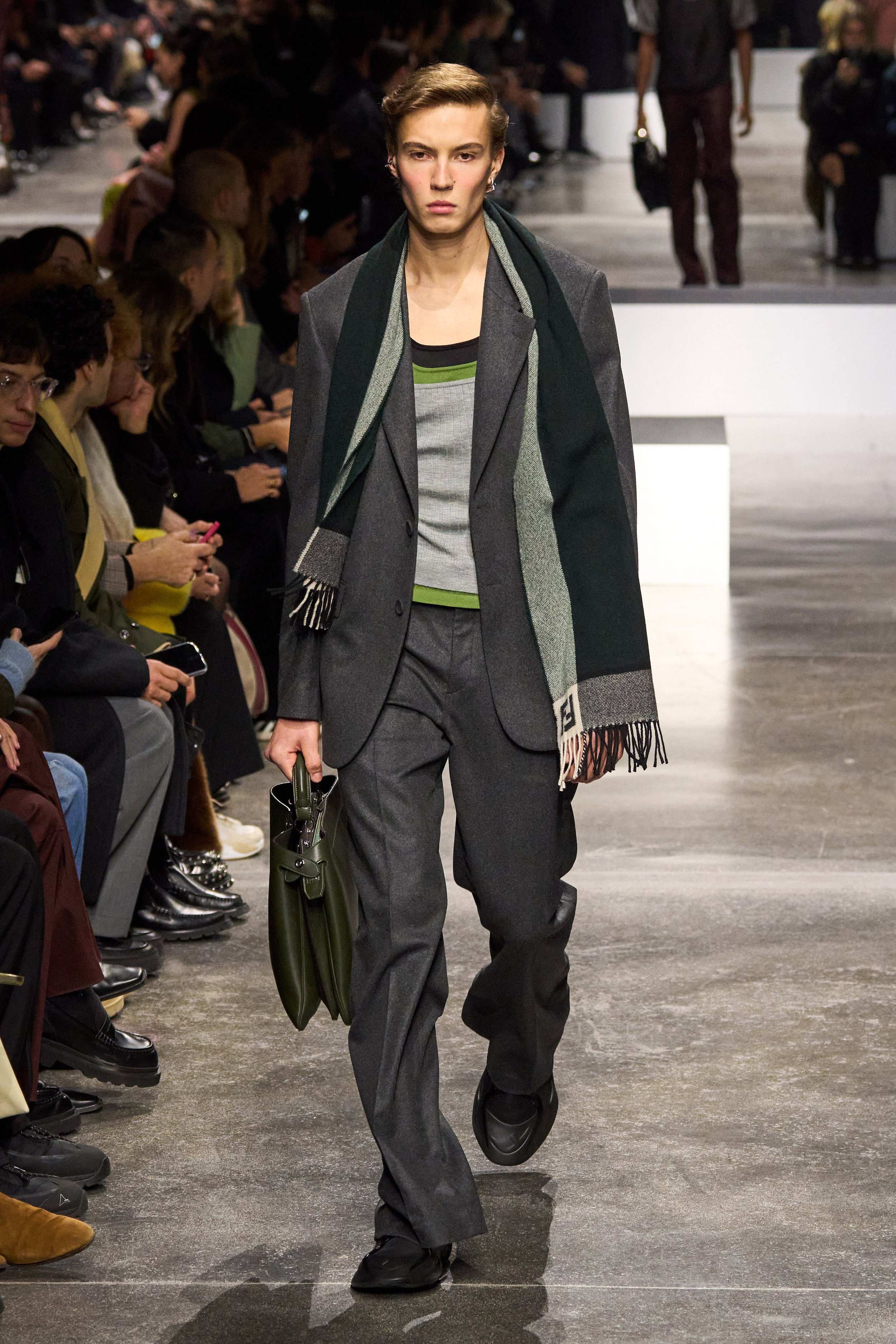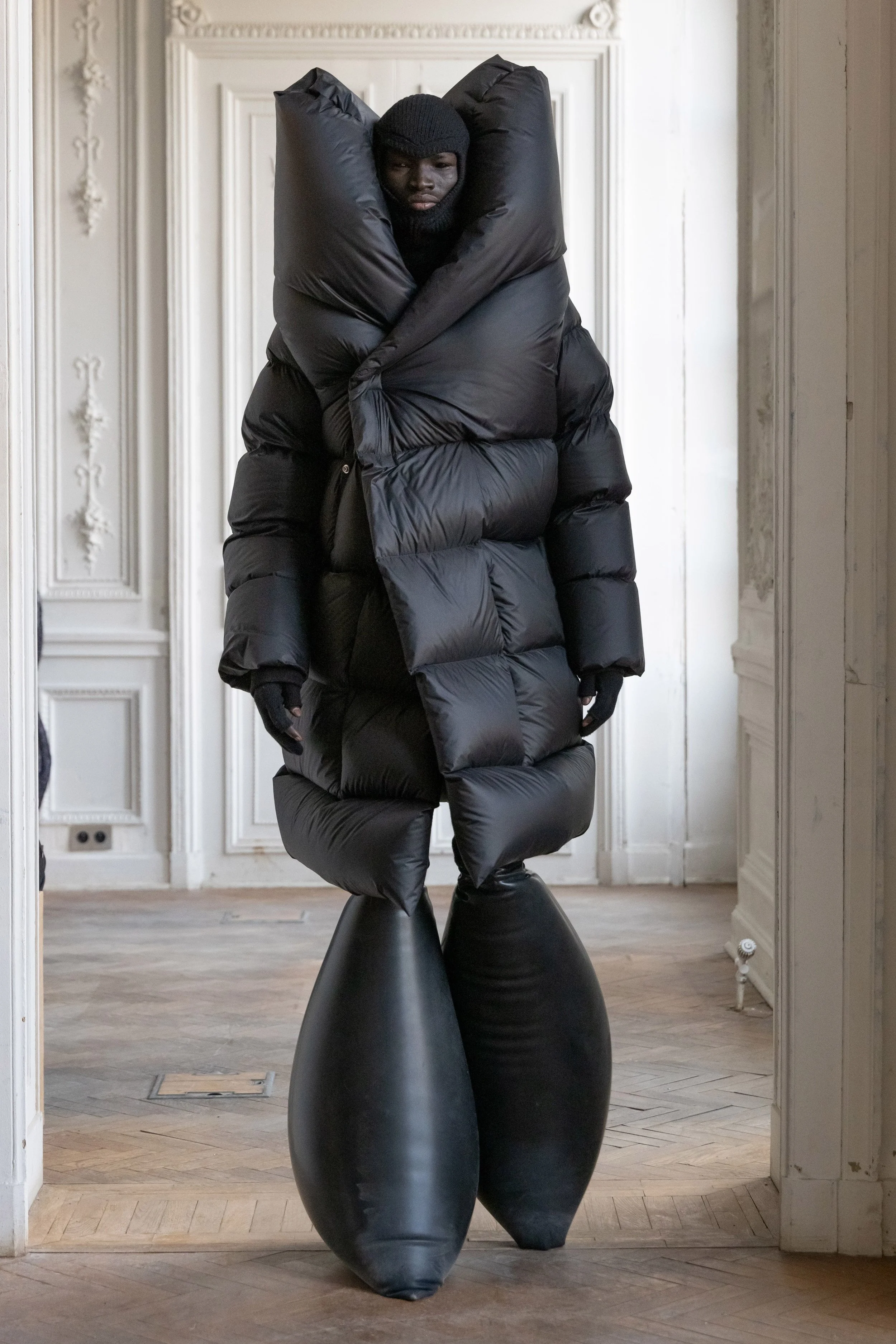Sexy's Back at Men's Fashion Week
Graphic by Austin Kim
The trends of this year’s Men’s Fashion Week were actually set weeks before the scheduled start date. Although Milan and Paris are the official stops on the fashion calendar, the surprise of Jeremy Allen White in a beefcake Calvin Klein campaign jumpstarted the fashion world and took over the public consciousness. In the video advertisement released at the start of January, White strips down on a New York City rooftop to show off his tattooed muscles and sulks around the skyline. The advertisements solidify White’s stardom and boldly declare that sexiness is in for 2024.
In the 21st century, it’s difficult to pinpoint an exact definition of “sexy.” Especially after conversations about body positivity and diversity, a skinny white body is no longer the status quo. When you consider the complexity of sexuality and queerness, sexiness becomes even more perverted and undefinable.
At Sabato De Sarno’s Gucci menswear debut, his answer to sexiness was obvious. He styled tank tops with necklines below the pecs and overlaid large duster coats that exposed the models' collar bones. Most looks were accessorized with ribbon-esque ties long enough to become a leash, almost begging to be pulled. Sabato’s proposal was an in-your-face sexiness that demanded flirtation. His heavy leather coats, chunky knits and blazers with defined lapels could be worn conservatively, but as styled in the collection, they fed the viewers' interest in the body under the clothing rather than in the clothes themselves.
Images courtesy of Vogue Runway
Conservatism can definitely be sexy, too. Fendi presented a collection of a beautiful wardrobe with provocative textures. Layered shirting has become a major trend this season: shirts on shirts, sweaters on sweaters and tank tops on tank tops. It’s tautological and functional nonsense, but the emotional and physical feeling of the layers is palpable. Fendi styled tonal cardigans over knit polos and triple-layered tank tops in different colors. It seems like an oxymoron that putting on an excessive amount of clothes would read as sexy, but the layers of clothing create a silhouette that projects eroticism. It makes you wonder: What’s underneath? Maybe the man wearing them doesn’t have much emotional depth, but his layers and layers of clothing are a suitable replacement for his personality. Is this the modern-day himbo?
Seduction was the name of the game at Jonathan Anderson’s Loewe. Anderson collaborated with American multimedia artist Richard Hawkins, who created video collages featuring everyone’s favorite online boyfriends. The runway was lined with video screens shaped like cathedral windows with Loewe house ambassadors Jamie Dornan, Omar Apollo and others flexing their muscles and staring longingly into the camera. In conversation with the video installations, the clothes spoke to modern desire. Models were bare-chested or had big enough slits in their jackets to expose their six-packs. All of the clothes were designed with their online appearance in mind. Low-top sneakers with high socks and coats over cardigans were all Frankenstein amalgamations of trompe-l'oeil. The IRL practicality of the clothes does not matter because when worn in thirst-trap TikToks or Instagram outfit pictures, the 2D flattening of the digital world removes any need for functionality. It’s difficult to find connection in the world of dating apps, Instagram DMs and doom scrolling, but Anderson designed the perfect wardrobe for digital personas. To be sexy today is to look good on Instagram or the For You Page; it’s less important to look that good in person.
Rick Owens presented a more empathetic, emotional understanding of love and desire. Although Owens is characterized as avante-garde or aesthetically dense, he proved that he has a true understanding of clothing as a language. The humongous inflated boots, knit head-to-toe jumpsuits and structural puffer jackets shaped the models’ bodies with beautiful silhouettes. The most notable series of looks were the three furry balls of fabric that embraced the models in warmth and protection. In a way, these fabric balls mimic the physical sensation of embracing and being held by another person. Season after season, Owens remains incredibly optimistic about the ongoing chaos of the world. Even amidst wars, economic crises and technological revolutions, he has found a way to communicate the grotesque beauty of the human experience. This collection balances the universal concept of romantic desire with the world’s external destruction. The clothes are armor for the apocalypse, but they also remind viewers of how art and humanity can be catalysts for good. If there’s anyone who will guide us through the ultraviolence into the light, it’ll be Rick Owens.
Sex is certainly back for 2024, but it never left to begin with. The pursuit to feel desired and sexy is a persistent aspect of the human condition. These recent men’s collections only created a new commercial language for how sexiness can be monetized. People no longer aspire to a certain physical look achieved through fitness; instead, sexiness is tied to material goods.
The world has reached a stage where everything is commodified: wellness, identities and politics. Now you can be sexy too if you buy not one Fendi tank top but three. You can replace the feeling of being held in the arms of a lover with a Rick Owens jacket.
This is possibly too much capitalist pessimism undercutting the artful seduction of the clothing presented this season. Anything that can soothe the yearning, lust and eternal delusion is of immense value to ease the human heart. Maybe beautiful clothes are the antidote to the ennui of being alone.











